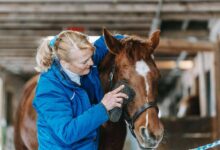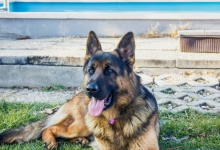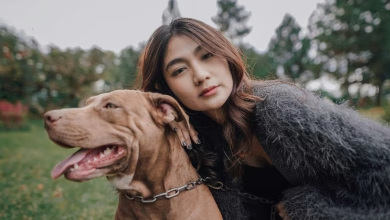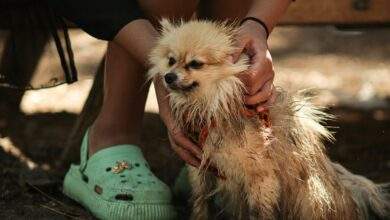
As our beloved pets gracefully age, they deserve special care and attention in every aspect of their lives, including grooming. Senior pets often have unique needs and sensitivities that require a gentle touch and tailored grooming routines. In this comprehensive guide, we’ll explore the art of grooming for senior pets, offering invaluable tips and insights on how to make the process comfortable and enjoyable for your aging furry friend. Let’s embark on this journey of love and care for our senior companions.
The Importance of Grooming for Older Pets
Grooming plays a pivotal role in maintaining the health and well-being of senior pets. As our furry friends age, their grooming needs change, and they may require more attention in certain areas. Here’s why grooming is crucial for senior pets:
1. Skin and Coat Health
As pets age, their skin and coat undergo various changes. These changes can have a significant impact on their overall comfort and health. Let’s explore how grooming contributes to the well-being of senior pets in this context:
Moisturizing the Skin: Senior pets often experience dry skin due to reduced oil production. Using specially formulated moisturizing shampoos and conditioners can help replenish lost moisture, keeping their skin hydrated and less prone to itching and irritation.
Promoting Blood Circulation: Brushing and massaging during grooming sessions not only remove loose hair but also stimulate blood circulation in the skin. This increased circulation is beneficial for senior pets as it can help alleviate stiffness and discomfort associated with aging.
Removal of Dead Hair: Senior pets are more likely to have loose or dead hair that can mat and tangle. Regular brushing effectively removes this hair, reducing the risk of painful matting and minimizing shedding around the house.
2. Mobility and Comfort
Aging can bring about various physical challenges for senior pets, including joint problems like arthritis. Proper grooming can help address these challenges and ensure that your senior companion remains comfortable and mobile:
Preventing Painful Matting: Mats and tangles in a pet’s fur can be extremely uncomfortable, even painful. Senior pets may find it challenging to groom themselves effectively. By maintaining their coat through regular grooming, you can prevent these painful issues.
Trimming Nails: Overgrown nails can affect a pet’s gait and cause discomfort. Senior pets may be less active, which can result in slower nail growth. Nonetheless, regular nail trimming remains essential to prevent mobility problems and potential injury.
Cleaning Ears: Ear infections become more common in senior pets due to factors like reduced immunity and changes in ear wax production. Grooming should include regular ear cleaning to prevent such infections and discomfort.
Tailoring Your Grooming Routine for Older Pets
Now that we understand why grooming is essential for senior pets, let’s delve into how to tailor your grooming routine to meet their specific needs.
1. Choose the Right Products
Selecting appropriate grooming products is the first step in providing the best care for your senior pet. Here’s what to consider:
Gentle Shampoos and Conditioners: Opt for mild, hypoallergenic grooming products that are gentle on sensitive skin. Look for options that offer moisturizing properties to combat dryness.
Ear Cleaners: Invest in a vet-recommended ear cleaner specifically designed for regular ear maintenance in senior pets. Avoid using cotton swabs, as they can push debris further into the ear canal.
2. Brushing and Massaging Techniques
Proper brushing and massaging techniques are vital for senior pets:
Brush Selection: Choose brushes and combs specifically designed for older pets. These should be gentle on the skin while still effective at removing tangles and loose fur. Slicker brushes and wide-toothed combs are often suitable choices.
Massage: Incorporate gentle massaging during brushing sessions to promote circulation and relaxation. Pay attention to areas where your pet might have stiffness or soreness, such as their shoulders or hips.
3. Adjusting the Frequency
Senior pets may not require as frequent grooming as their younger counterparts. Here’s how to determine the appropriate grooming frequency:
Assess Their Needs: Pay close attention to your pet’s coat condition. If they have a short, low-maintenance coat, less frequent grooming sessions may suffice. However, long-haired breeds or those prone to matting may require more frequent grooming.
Be Gentle: Avoid rigorous grooming sessions, which can be tiring for senior pets. Instead, opt for shorter, more relaxed sessions to prevent them from becoming stressed or fatigued.
4. Comfort and Safety
Ensuring your senior pet’s comfort and safety during grooming is paramount:
Non-Slip Surface: Place a non-slip mat on the grooming surface to prevent slips and falls, especially if your pet has mobility issues. This simple measure can significantly enhance their safety.
Warm Environment: Keep the grooming area comfortably warm. Senior pets are more sensitive to temperature changes, so maintaining a cozy environment can make the grooming experience more pleasant for them.
Bonding and Positive Reinforcement
Grooming time is an excellent opportunity to strengthen your bond with your senior pet:
Reward System: Implement a reward system using treats and verbal praise to reinforce good behavior during grooming. Positive reinforcement creates a more enjoyable grooming experience and strengthens the bond between you and your pet.
Regular Check-ins: Frequent grooming sessions allow you to check for any lumps, bumps, or skin issues that may need prompt veterinary attention. Detecting problems early can lead to better outcomes for senior pets.
Professional Grooming vs. DIY
When it comes to grooming senior pets, you might wonder whether to opt for professional services or handle it yourself:
Professional Grooming: Consider professional grooming for tasks that require specialized skills or equipment, such as nail trimming. This is especially important if you’re not confident in performing these tasks safely. Professional groomers are experienced in handling senior pets and can ensure a stress-free grooming experience.
DIY Grooming: For routine grooming tasks like brushing, you can handle them at home. This not only saves you money but also allows you to bond with your senior pet and maintain their coat between professional appointments.
Grooming for Older Pets
In conclusion, grooming for senior pets is not just about aesthetics but also about their health, comfort, and overall well-being. Tailoring your grooming routine to suit their changing needs ensures they enjoy their golden years with grace and dignity. Remember to be patient, gentle, and attentive during grooming sessions, and your senior companion will thank you with love and affection.








